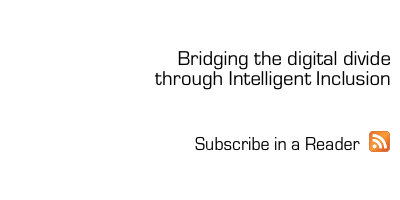Creativity has always been the driving force for mankind, but transforming ideas into reality was something that only a few could achieve. Raising funds was usually a nightmare: long hours talking on phone, endless meetings and meager results. But now this is changing.
If we look at the Internet statistics today, we can see that over 1/3 of the global population is connected. However unfair it may seem, the higher income social economic groups were the first ones to enter the new world, and after more than 10 years of Internet usage, they are comfortable not only with the medium, but also for using it to carry out financial transactions. Buying online is commonplace in many markets; this year marks the first time that online shopping in Black Friday exceeded 1 billion dollars. So, society was ready for digital fundraising.
If you haven’t heard yet about crowdsourcing, you are missing an crucial piece in today’s online ecosystem. Wikipedia defines Crowdsourcing as a process that involves outsourcing tasks to a distributed group of people, which is usually an undefined public. Among the countless variations of crowdsourcing, there is one that I will focus on this post: crowdfunding. Crowdfunding is defined, also by Wikipedia, as the funding of your projects by a multitude of people, with various levels of contribution.
Traditional fundraising for projects starts with a comprehensive business case, along with a nice presentation, that has to be done to every single prospect that you want to address: executives, angel investors, venture capitalists. As time is a key constraint, there is only a limited amount of potential investors that you can talk to secure funding for your project.
Kickstarter came to change the landscape. For the first time, you had proper tools to talk to an audience that is several times larger that what you could address before. The process is easy and straightforward, and they allow you to use any tools you want to promote your ideas. You can record your ideas on a nice video, complement it with killer texts, and be very creative on what you offer back to your backers. These offers can be extremely cheap, like mentions for people that donate 1 dollar, up to full solutions, books or whatever you propose. The variety of projects is also encouraging: films, album recording, technical gadgets, industrial machines, art books, art exhibitions, clothing, and many more. The creator receives the money after the funding reached 100%, and in some cases, goes way beyond the original expectations. Pebble is an example; the project raised over 10 million dollars, more than 10,000% (ten thousand percent) of the original request. Amanda Pledge secured almost 1.2 million dollars for her new album, art book and tour. The list is large and very enticing.
So, the main question now becomes: can we replicate this in other countries? We are now seeing a similar solution in Brazil, Catarse.me, funding projects in arts, music and many other categories. Recently in Kickstarter we had the funding of a new Arduino solution, for a team based in Italy. This model is also applicable to Latin America, but Africa will require a different approach. Banking in most countries is done by mobile phones, micro-payments are the norm, and the digital divide is slowly going away. It will happen for sure, but it will be at a different setup, with different goals and mechanisms.
So, do you know about any similar initiatives happening in your country?
Cheers,
Caetano Notari
Recommended Reading
How the reduction of the digital divide supports the growth of the global economy?
What is the status of the digital divide globally?


{ 0 comments… add one now }
You must log in to post a comment.